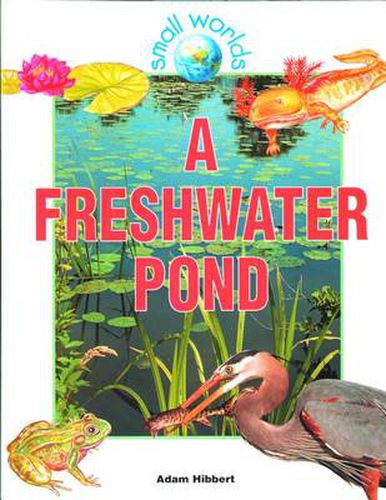Readings Newsletter
Become a Readings Member to make your shopping experience even easier.
Sign in or sign up for free!
You’re not far away from qualifying for FREE standard shipping within Australia
You’ve qualified for FREE standard shipping within Australia
The cart is loading…






Small Worlds introduces children to ecology and ecosystems by concentrating on life in a small part of a larger habitat. Beginning with a description of the habitat, the book then looks at the plants and animals that live there. Young readers are introduced to: – the relationships that exist between groups of organisms and their environment – important ecological concepts, such as producers, consumers, decomposers, and food webs, explained and illustrated with examples – activities that encourage children to investigate ecosystems closer to home – tips on observing safely without disturbing nature or endangering themselves A Freshwater Pond describes the plants, animals, and insects that live in a pond and how they adapt to the water’s changing condition in dry summers and icy winters. Insects, amphibians, reptiles, and animals that make the pond their home are featured along with plants ranging from simple, single-celled algae to complex, bug-eating plants. A special section gives safety tips for visiting a pond and shows young readers how to create their own mini-pond in a bucket. Fantastic fact boxes highlight: – the process from egg to frog – hunting habits – why some insects can walk on water
$9.00 standard shipping within Australia
FREE standard shipping within Australia for orders over $100.00
Express & International shipping calculated at checkout
Small Worlds introduces children to ecology and ecosystems by concentrating on life in a small part of a larger habitat. Beginning with a description of the habitat, the book then looks at the plants and animals that live there. Young readers are introduced to: – the relationships that exist between groups of organisms and their environment – important ecological concepts, such as producers, consumers, decomposers, and food webs, explained and illustrated with examples – activities that encourage children to investigate ecosystems closer to home – tips on observing safely without disturbing nature or endangering themselves A Freshwater Pond describes the plants, animals, and insects that live in a pond and how they adapt to the water’s changing condition in dry summers and icy winters. Insects, amphibians, reptiles, and animals that make the pond their home are featured along with plants ranging from simple, single-celled algae to complex, bug-eating plants. A special section gives safety tips for visiting a pond and shows young readers how to create their own mini-pond in a bucket. Fantastic fact boxes highlight: – the process from egg to frog – hunting habits – why some insects can walk on water